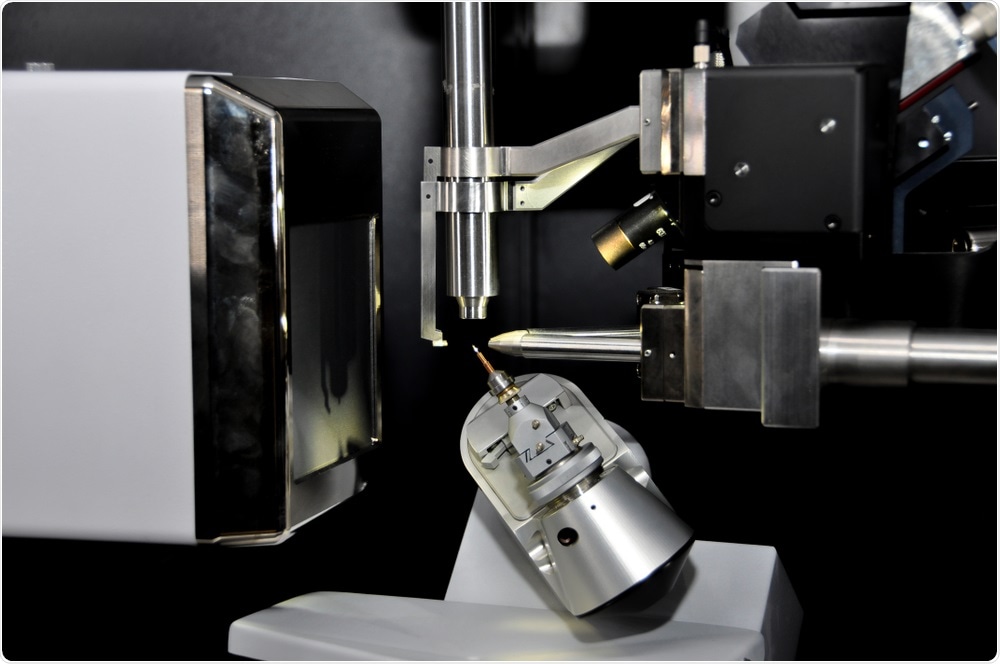The importance of drug analysis
X-ray techniques have been used for decades by authorities to prevent crime and keep people safe. Perhaps their most well-known use is for the detection of dangerous and banned items or substances, preventing them from entering controlled areas such as airports and airplanes, government building, trains and train stations, cultural landmarks and other high-profile, at-risk locations. Banned substances may include anything from firearms to explosives, or drugs.
In this article, we will delve into the use of x-ray methods in the detection and analysis of drugs. Further than their application of being used as a security method, to control to movement of illegal drugs, x-ray techniques are also being used in a less known application, in the development and discovery of new pharmaceutical drugs
X-ray diffraction methods have become established in these applications. Below we discuss the role x-ray diffraction plays in analyzing drugs in two different settings- security and pharmaceuticals.

Image Credit: Isuaneye/Shutterstock.com
Security at airports
Recent years have seen x-ray techniques used at airports becoming more sophisticated and more capable of identifying drugs hidden in luggage through imagery alone. X-ray techniques cannot only detect the difference between metal and non-metals, as it did when it was first relied on as an element of security but now, with the development of x-ray diffraction, it can recognize the presence of certain elements and substances. The atomic structure of specific elements responds uniquely to being exposed to the x-ray wavelength, producing a distinctive wavelength in return that has a recognizable energy level. This reflected wavelength is used as a fingerprint of the element and can identify the presence of illegal drugs that passengers may be attempting to bring across borders.
X-ray diffraction methods can be programmed to search for specific atomic compositions, such as those that identifying cocaine or other narcotics. Modern x-ray diffraction machinery can produce high-speed 3D images of the structures inside of luggage or containers which give details of the atomic arrangement of every single point. While these methods are still in need of further development to enhance their clarity and accuracy, x-ray diffraction has already established itself as a reliable method for high-speed identification of substances in cluttered scenes, such as suitcases, where time and security is paramount
Drug discovery and development
X-ray crystallography is a form of x-ray diffraction that is used for uncovering the atomic and molecular structure of a crystal, or, a particle of powder. The technique relies on the fact that the crystalline atoms in a sample diffract a beam of incident x-rays in specific ways, depending on the characteristics of the substance.
The past century has seen the development of the x-ray crystallography technique and has now become a firmly established method of determining the molecular structure of a sample at atomic resolution. More recently, the last two decades have seen the establishment of x-ray crystallography within the field of research and development into the innovation of new pharmaceutical cocrystals. These substances are crystalline solids that contain both active pharmaceutical ingredients as well as coformers. Pharmaceutical cocrystals play a vital role in improving the properties and delivery of active pharmaceutical ingredients, which is why their accurate and effective analysis is essential.
X-ray crystallography is often used to study single crystals of crystalline solids, where the measurement of the diffraction of the x-ray through the single crystal indicates the characteristics of the substance, which is useful for both qualitative and quantitative analysis. The method can be used to successfully analyze the phase purity of a pharmaceutical substance.
Pharmaceuticals are usually first constructed in a solid form, due to the ease of production and the advantages of being stable substances. However, in the case that the solid form of a pharmaceutical faces critical issues, such as with solubility, permeability, hygroscopicity, stability dissolution rate, or any other physicochemical property issue, pharmaceutical developers will usually look to creating the drug in an alternative format, such as in the form of a salt, cocrystal, or a solvate/hydrate. The challenge presented to pharmaceutical developers is lies in the need to create pharmaceuticals in different forms whilst being able to control and predict their various characteristics, ensuring that the correct dosages can be calculated, and potential side effects highlighted.
The analysis of crystalline solids using x-ray crystallography has proven essential to gaining accurate information on numerous characteristics of the pharmaceutical, facilitating the development of more effective, alternative drugs. The use of x-ray crystallography in pharmaceuticals is also helping to speed up development time, acquiring necessary insights in a short time frame, helping scientists understand what amendments they need to make to their drugs in development before they can enter the phase of clinical trials with more speed than can be achieved with other methods.